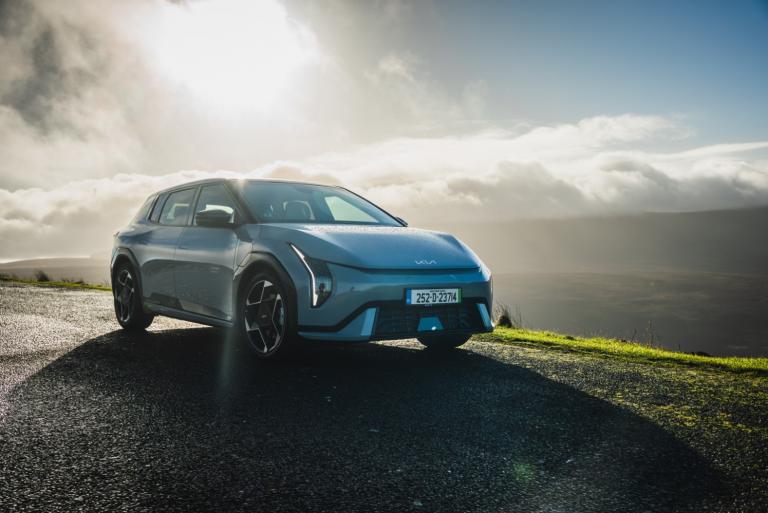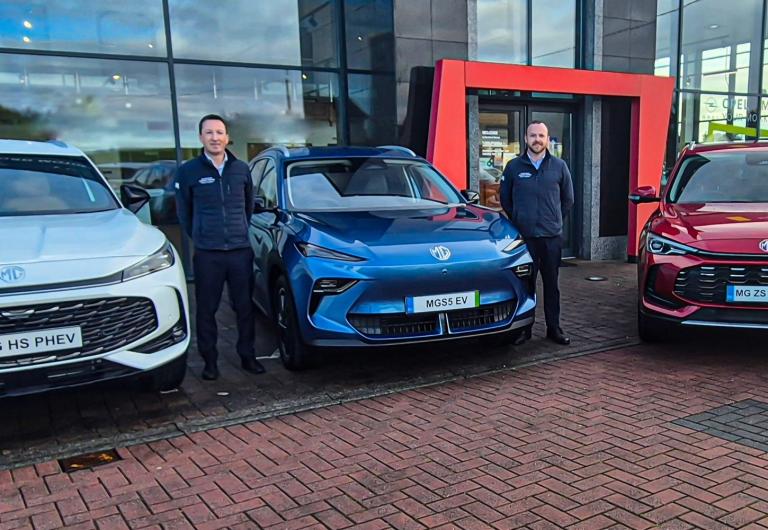Hyundai’s Kona: is this the electric car we’ve been waiting for?
Published on 16 February, 2019
This is a story about a car that promises to do what few others manage: to cover 440km or so on one charge.
Overview
This is a story about a car that promises to do what few others manage: to cover 440km or so on one charge. Yes, this is about an electric car - the Kona crossover EV from Hyundai.
Now in claiming to be capable of such distance, Hyundai are sticking their necks out a bit. That's because they risk confidence being undermined in a mode of transport still dogged by complaints over uncertainty on range.
I've found some readers' intentions of going electric this past year were reined in after they discovered most EVs do NOT do what they say on the tin.
Well, technically they do but only under Scrooge-like driving. Who wants to be a two-mile-a-fortnight driver and live life in the slow-slow lane to prove a point?
I don't.
I drove the Kona as I would any other car and I've come to some strong conclusions as a result.
I started off with a projected range of 467km. That is higher than the company itself claims (447km). It was at 445km after 25km and I thought I was on a winner. But as soon as I turned on the air con, the range indicator dropped 15km. A familiar pattern awaited me, I mused with regret, as I tipped around town. But I was mistaken, happily. As I steadily racked up the kilometres, the range estimation marched in virtual equal measure in the opposite direction. In other words, real and projected consumption synchronised.
OK, that was about town. What about a longer drive deep into Wexford? That's where the real and the projected drifted apart, as I expected and accepted would happen. Yet - and this is what surprised me - the rate of separation at no stage worried me. That's a first for me because I invariably fret I won't have enough battery power to get me home. No concerns with the Kona.
Sure, the long, higher speed journey cut the range but I confidently drove as normal - at 120kmh where legally permitted. I still had 200km in the tank when I got back.
And the return to town-driving noticeably slowed the rate of range dissipation. Gradually the gap between use and what remained 'in the tank' narrowed. So with 80km left, I did my final calculations. I hope you find them interesting.
Key to the whole concept is the (lithium-ion polymer) battery-pack's capacity. At 64kWh it outguns rivals such as the Nissan Leaf (less expensive at under €30,000) and the likes of Volkswagen's e-Golf in the general price bracket while Jaguar and Tesla, for example, are hugely expensive by comparison.
And helping range is a three-stage regenerative system which I (little boast) utilised with some aplomb via paddles on the steering column. It takes energy from forward motion and gives it to the battery. So you can pull the left-side paddle to slow down easily, moderately or quite sternly rather than braking. And you can do the same on the other paddle to reverse the restraints. It's a great way of saving on energy and brake pads.
One of the reasons my consumption went up, however, was the level of acceleration you get with EVs. They have maximum torque (pulling power) from the start. And I couldn't resist the temptation to exploit it (0-100kmh in 7.6secs). I also discovered a nice bit of life in the chassis.
But away from the technicals, this is a fairly good looking car with a different grille to the fossil-fuelled Konas. I think it looks better than them.
But the interior colour in mine - an endless spray of fawn - put me off. Luckily they have a good number of alternative colour schemes. Anything but fawn, please.
Other than that, the simplicity of displays/dash layout was laudable. You only have to press a button for Drive, Reverse, etc.
My big, big complaint was lack of space for rear passengers: really poor for a €37,000+ car. The boot wasn't much better. I just wonder if a family would buy it on that basis.
I do think they could be seriously tempted. I can tell you I would have managed at least 396km without any compromise in my driving.
And now I'll stick my neck out: you'll get 410km without great difficulty if you drive half-moderately on your urban or rural journeys. That makes the Kona, despite price and poor cabin space, the one the others have to beat. We have taken a big step towards electric driving for a major audience with this. It's not perfect but it shows what can, and will, be done by more automakers in the near future.
Facts & figures
Hyundai Kona electric SUV:
Price: €37,630 (after rebate, grant); 64kW battery pack; 150kW motor.
€120 tax, 0/100kmh 7.6 secs; claimed range 447km. Charging times: 75 mins 50kW station; 54 mins 100kW DC charger; normal charge (7.2Kw) 9h 35m. Spec incl: cruise control, Android Auto/Apple CarPlay, 7ins screen, rear park sensors/camera, wireless phone charger, 17ins alloys.
Latest Reviews

Kia EV4 Video Review

CarsIreland Dealership Awards 2025: Celebrating Excellence Across Ireland

Rochford Motors Joins MG Network as New West of Ireland Dealer